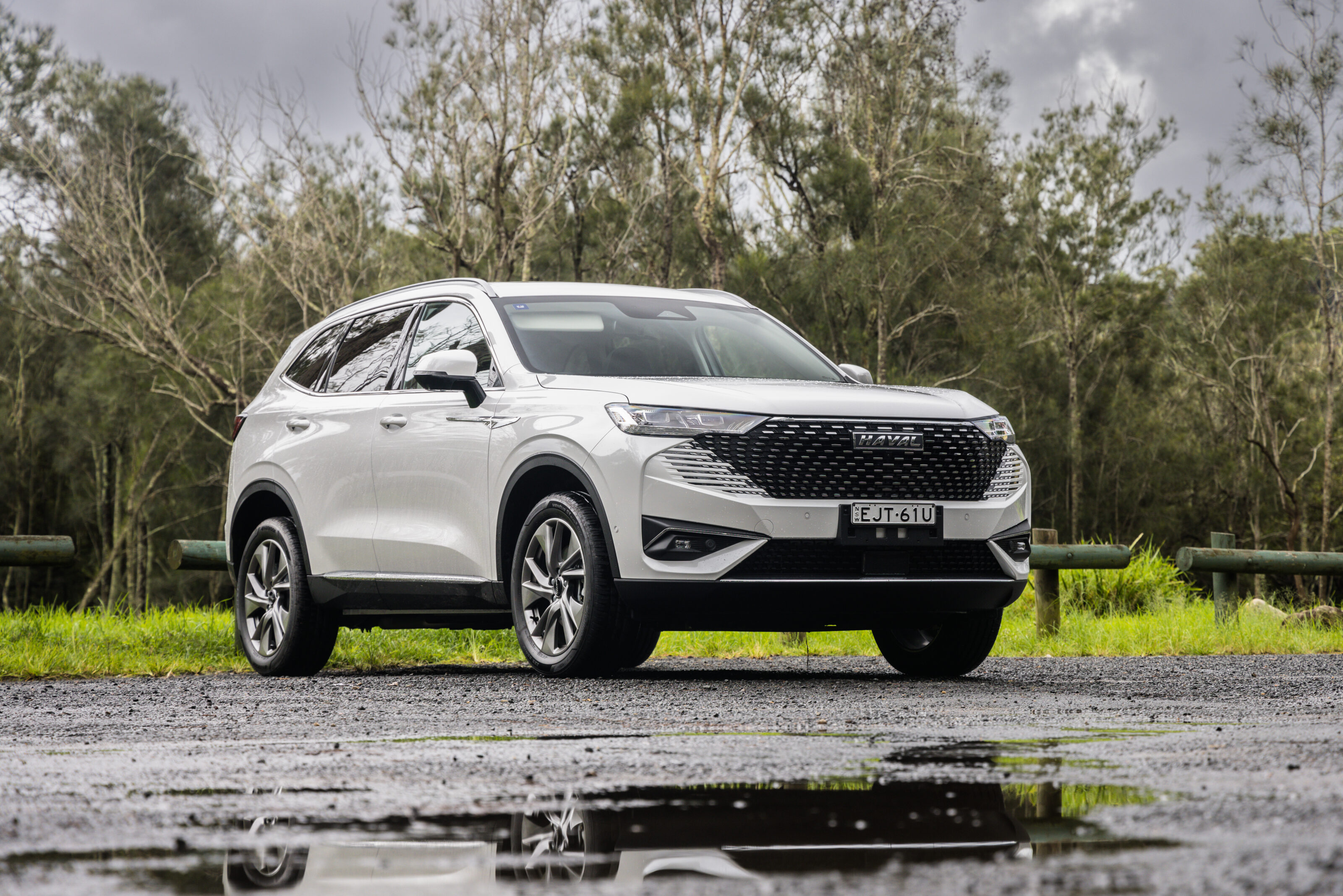
Score breakdown
Things we like
- A bargain
- Clever drivetrain
- You can get one
- Roomy
Not so much
- No spare tyre
- Squidgy handling
- Choppy low speed ride
- Not available in AWD
Haval is one of those brands that has seemingly come out of nowhere. For those who haven’t been paying very close attention, Haval is the SUV child of Great Wall Motors, now more known commonly as GWM (because that’s how they want it).
Last year saw a bit of a shift for the brand as the fairly terrible (but extremely cheap) H2 was consigned to the scrap heap of history and replaced with the rather more capable Jolion. Also last year came the replacement for the equally ordinary H6 with the second-generation of the mid-sizer arriving to take on one of the toughest segments in the country.
The new 2022 Haval H6 presents far better than the old, with a very confident, big-grilled face, better design but still very sharp pricing. And no obvious Land Rover Evoque, er, references.
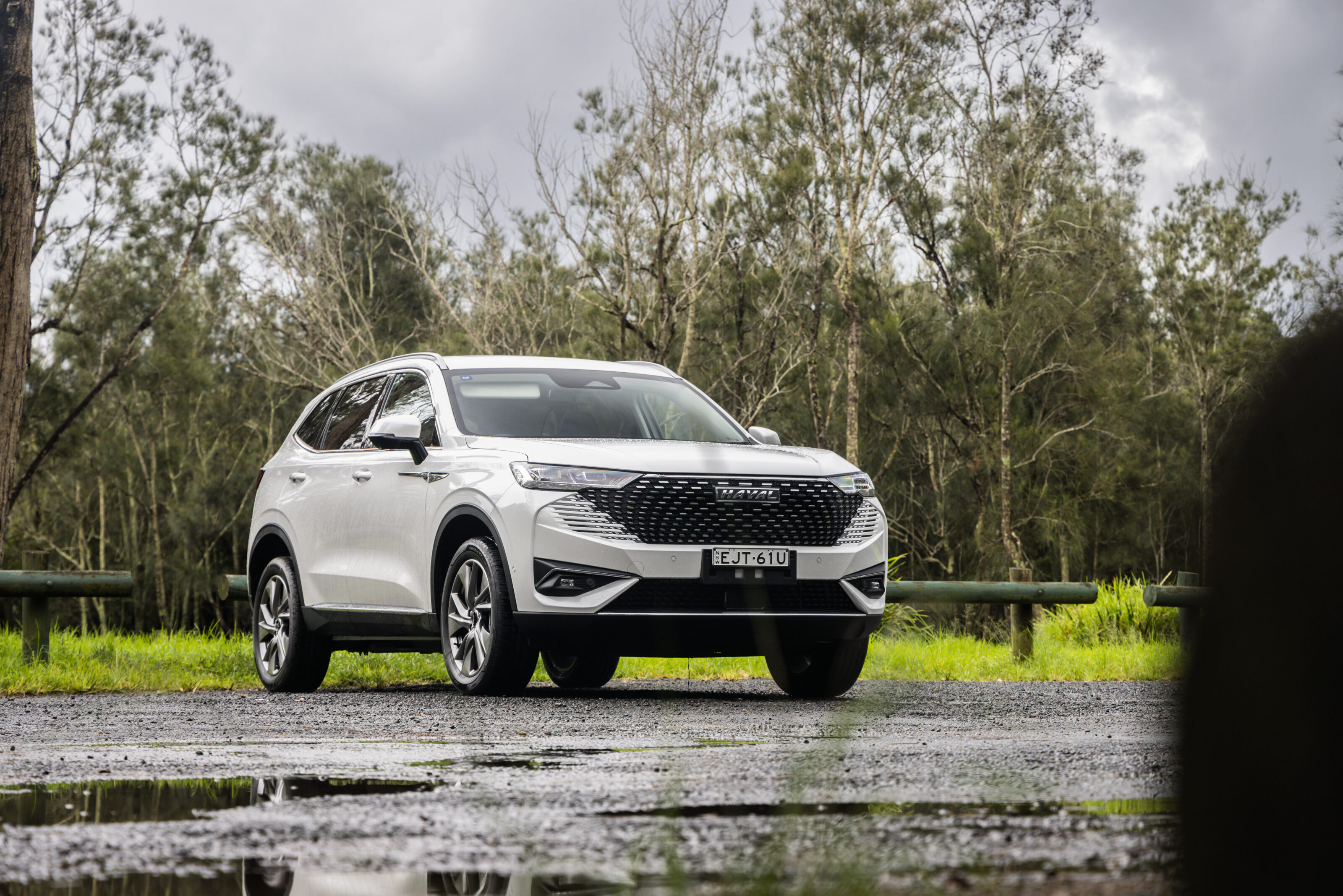
This year promises yet more from Haval. No, probably not the very amusingly named Big Dog SUV or Cool Dog lifestyle machine, but two new powertrain options for the H6.
Later in the year we’re expecting the plug-in hybrid (PHEV) to take on the Mitsubishi Eclipse Cross PHEV and compatriot MG HS PHEV, but right now we have the one which might cause some mild consternation among the mid-size SUV pack, the H6 Hybrid.
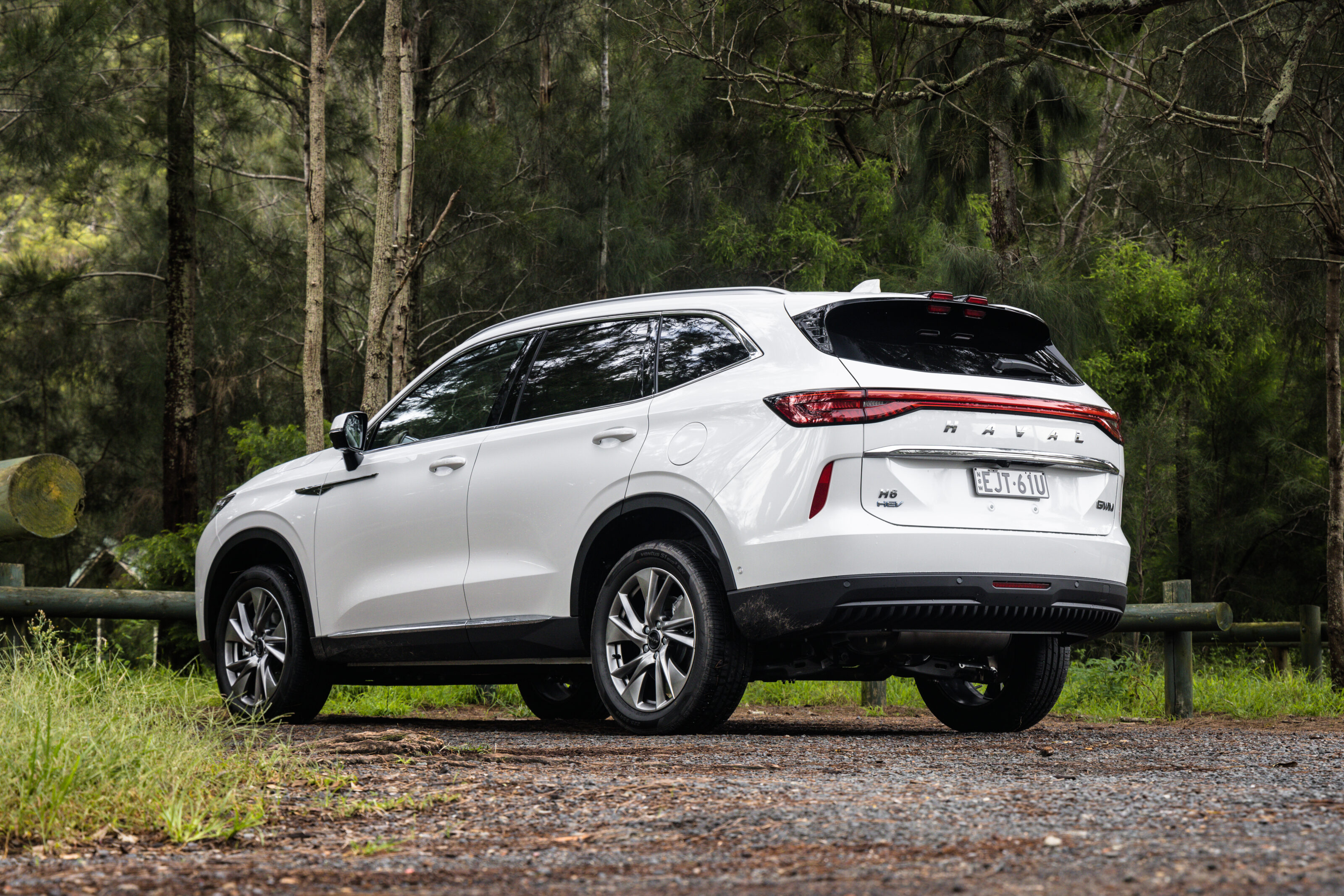
Pricing and Features
The H6 Hybrid we have here is in the one and only Ultra spec. That seems a bit odd given that there is already a clear price advantage over the Toyota RAV4 hybrid as well as – according to Haval, anyway – a stable supply of the machines from its Chinese factory.
An opportunity to make hay while the sun shines, you might say, as Toyota explains to its customers a 12-month wait and no discounting on its wildly popular SUV.
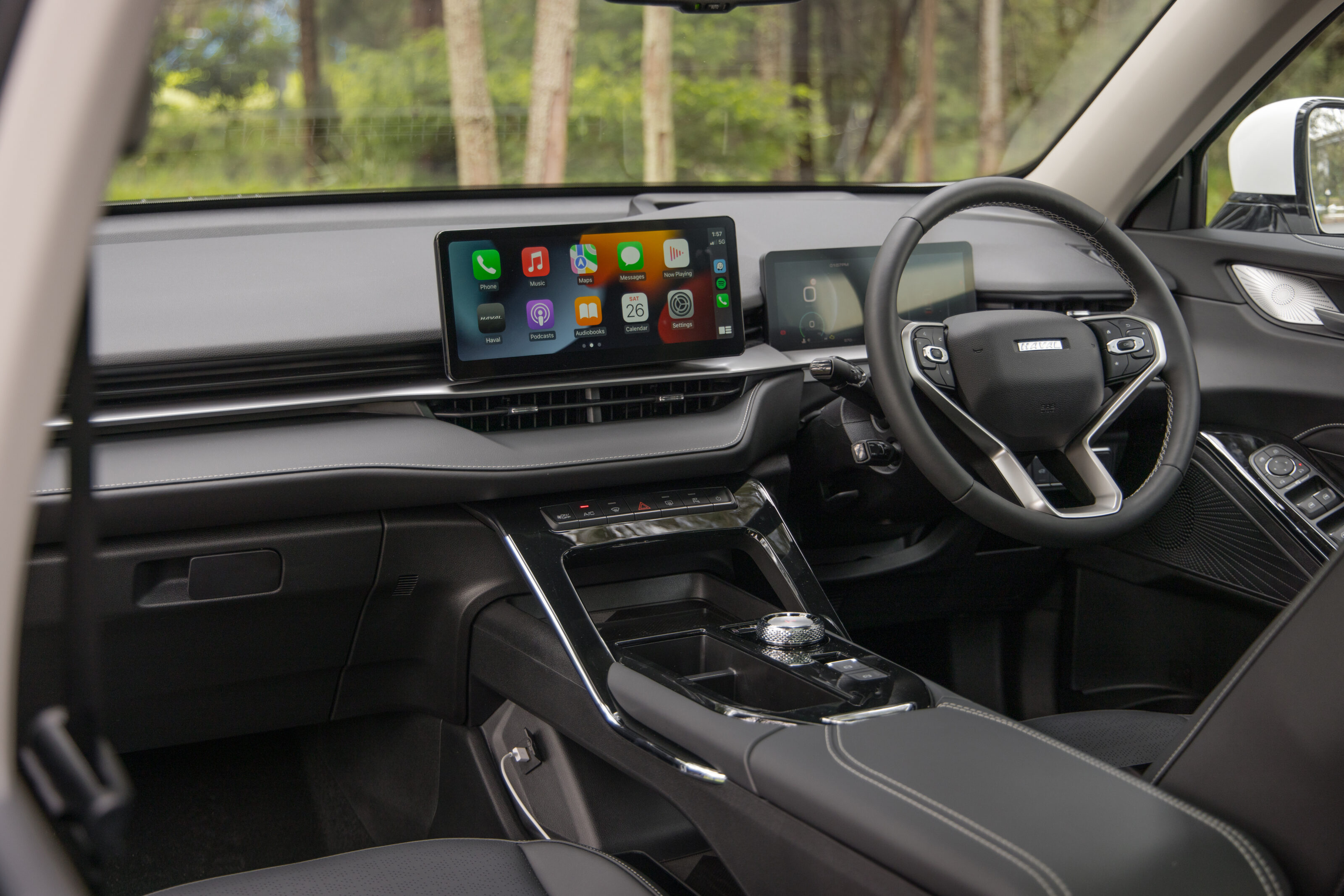
For $44,990 drive-away you get 19-inch alloys, an eight-speaker stereo, dual-zone climate control, reversing camera, around-view cameras, front and rear parking sensors, powered and heated front seats, auto LED headlights, head up display, keyless entry and start, auto parking, powered tailgate, gigantic sunroof, wireless charging pad, heated steering wheel, digital dashboard and a tyre repair kit.
The interior features a huge central touchscreen 12.3-inch touchscreen featuring Apple CarPlay and Android Auto. It’s pretty snappy and works well but everything is crammed into it which can make navigation a bit tricky. It seems like a better system than the hard-to-use system I used on the Jolion last year.

There is a ton of safety gear on board. The H6 Ultra has seven airbags (including a front centre airbag), the usuall traction and stability controls, forward AEB, forward collision warning, rear collision warning, rear cross-traffic alert, rear AEB, blind spot detection with lane change assist, lane tracing, lane keep assist, collision braking and cameras everywhere.
The forward AEB detects pedestrians, cyclists and if you’re about to turn right across oncoming traffic.
The non-hybrid H6 scored five ANCAP stars in March 2022 and unless something extraordinary happens, it’s probable the Hybrid would score the same, we’ll have to wait and see what the crash testers say.
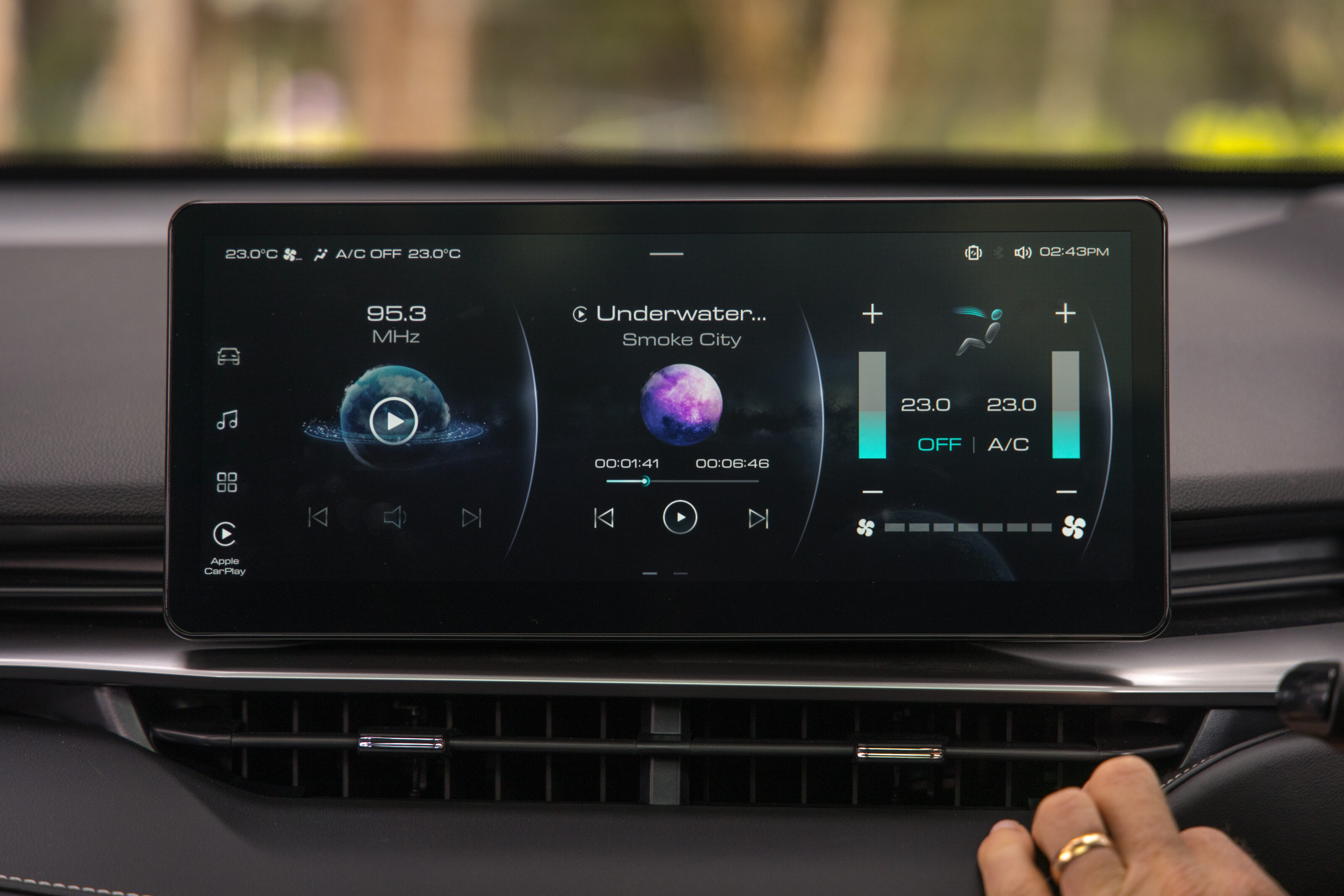
Comfort and space
I reckon the H6 is one of the bigger cabins in the segment, certainly roomier than the CX-5 and it also has the edge over the RAV4, particularly for rear seat passengers.
Upfront you have big flat seats which are comfortable and wrapped in what is likely fake leather, but that’s fine. I’m not a huge fan of the steering wheel but can’t explain why, so there’s nothing actually wrong with it.
You sit in the car rather than on it, which is something I like but the big A-pillar is a bit imposing and makes vision out the front a little awkward.
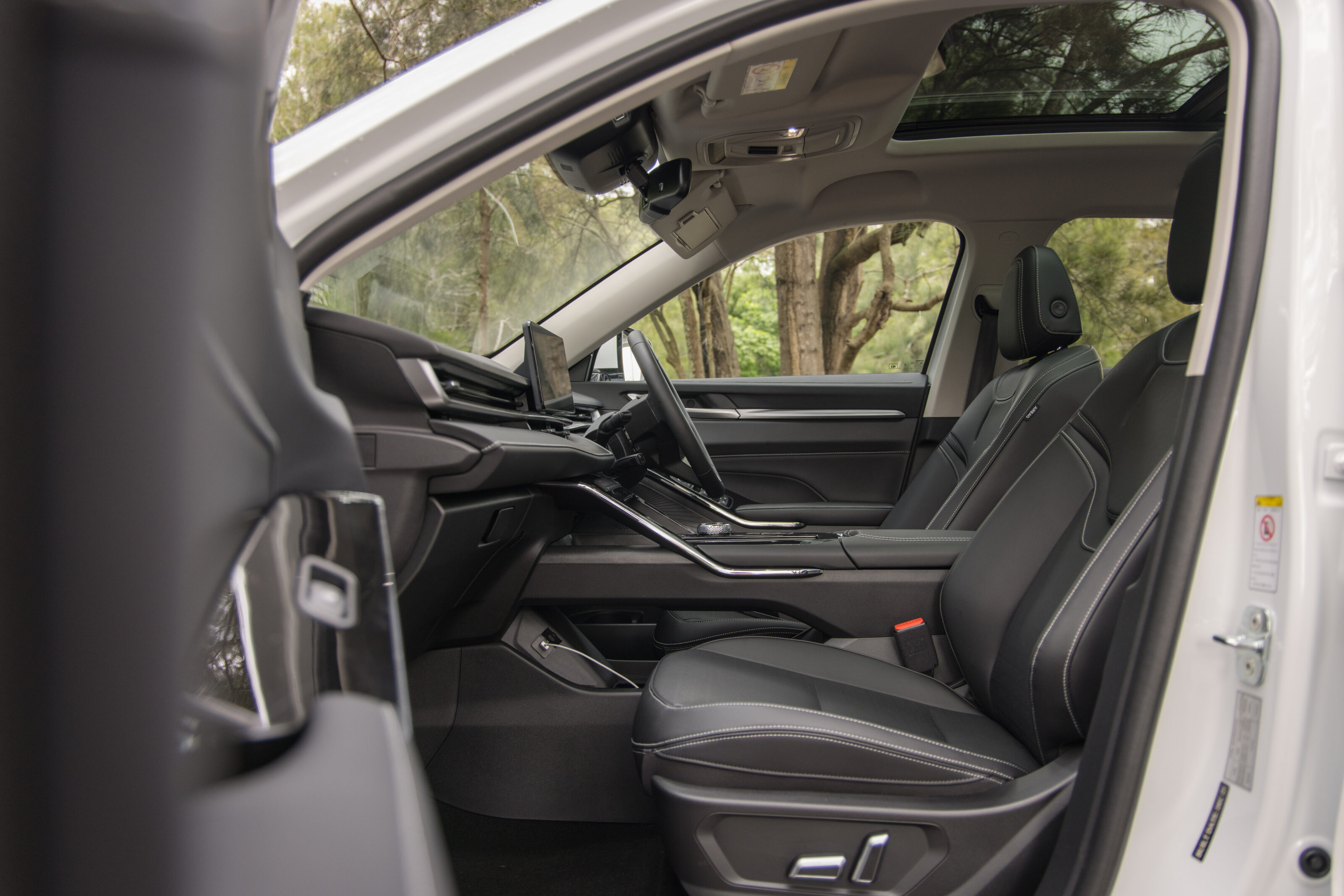
You have a wireless charging pad for your phone, a pair of good-sized cupholders with a retractable separator to convert the cupholder to a deep tray, which is handy.
The armrest covers a reasonably big bin, too. Under the console is a storage area like in the up-spec Santa Fe and points to a low transmission tunnel…
…which you really notice in the rear seats. You can get three comfortably across the back seat as the tunnel is just a mere bump in the floor rather than a saddle.
The middle seat is a little high but even with my six-foot frame, I don’t knock my shins against the rear air vents or the two USB ports to go with the two up front.

There is a lot of knee room behind my driving position and if you’re a tall family, this is definitely among the roomiest in the class. Even with the panoramic sunroof, there is plenty of headroom (you’ll see in the video what is surely my signature move, the coffee-cup-on-the-head clearance-test) and with the proper sunblocking blind retracted, the cabin floods with light.
It’s worth mentioning that this is the nicest finished Chinese brand car I’ve been in which demonstrates how rapidly car makers from that part of the world are adjusting to market expectations.
It’s a good-looking interior, with many nice materials and less of the scratchy hard plastic of, say, the Kia Sportage’s door cards.
There’s nothing groundbreaking or overly-ambitious about it, it just does a great job.
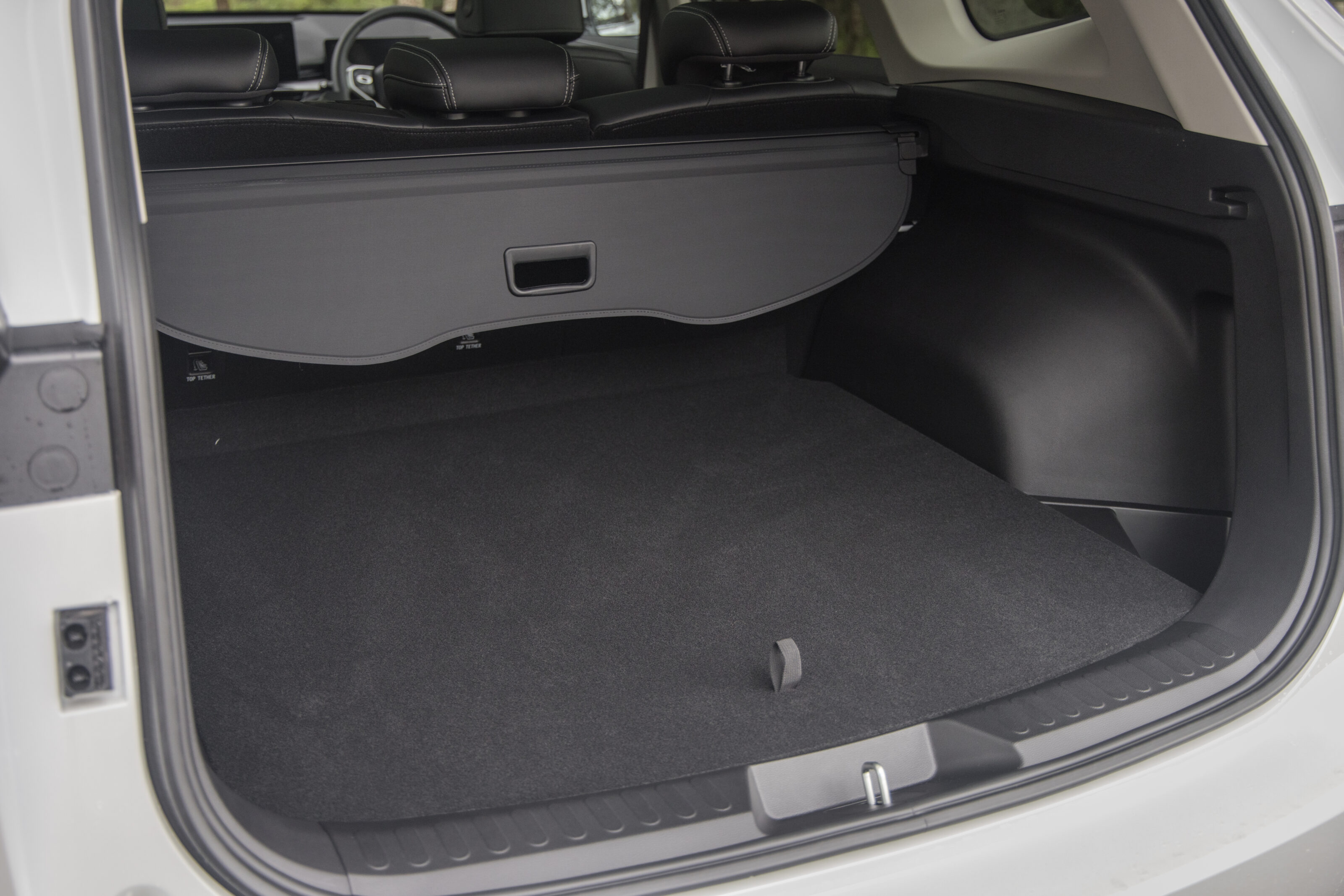
On the road
The first thing you’ll probably want to do is disable the lane tracing function. I’ve driven some cars with pushy systems, but it’s almost like this car wants you to be going somewhere else, such is the constant intervention from the steering, writhing around in your hand on even the most modest of bends. Frankly, I felt the car was judging my lane discipline.
Dive into the menus to find it and kill it just in case it’s a poltergeist trying to take you to the cemetery or something. Helpfully, it stays dead when you shut it off, rather than resetting every time you get out of the car.
While the cabin is commendably free of switchgear it might be too liberated from the tyranny of functional buttons because this is the kind of thing you probably want to use on a semi-regular basis. The climate controls particularly aren’t particularly well laid-out and makes getting things the way you want them a look-and-touch-and-look-again business.
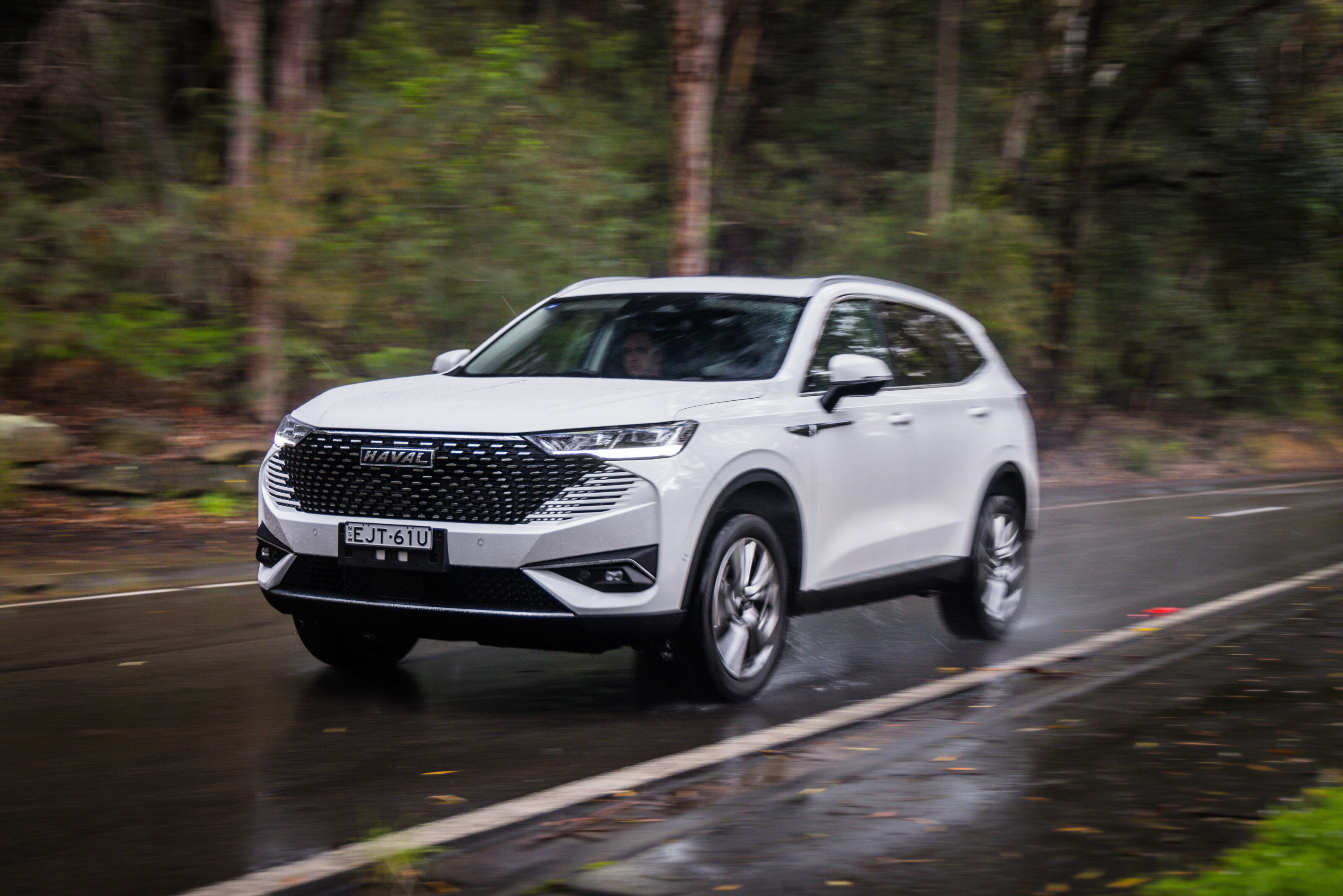
Like the Jolion, a lot of the features on the screen are a bit fiddly because the targets are small and the layout a little odd, but I’m sure with time, updates and patience, you’ll be fine. The Jolion system would always be annoying, so this is an improvement.
The digital dash can also be a bit hard to read, with a lot of small script on an otherwise functional instrument pack, with all the important information projected on to the windscreen in the HUD. I also noticed that the navigation directions from my phone were projected in the head-up display, which is really clever.
The H6 is reasonably good to drive although the remote steering and suspension’s reactions to small bumps aren’t exactly cutting edge and don’t match up with the segment’s high benchmarks. It’s set up quite softly, so you’ll notice body roll in the corners if you get a bit excited and a slightly heavy foot with any steering lock on will get you an entertaining chirp.
A flat foot uphill in the rain will have the car torque-steering up the road as the traction control’s light touch keeps the power flowing. I prefer it that way and, as you’ll have gathered, I was trying to see what would happen.
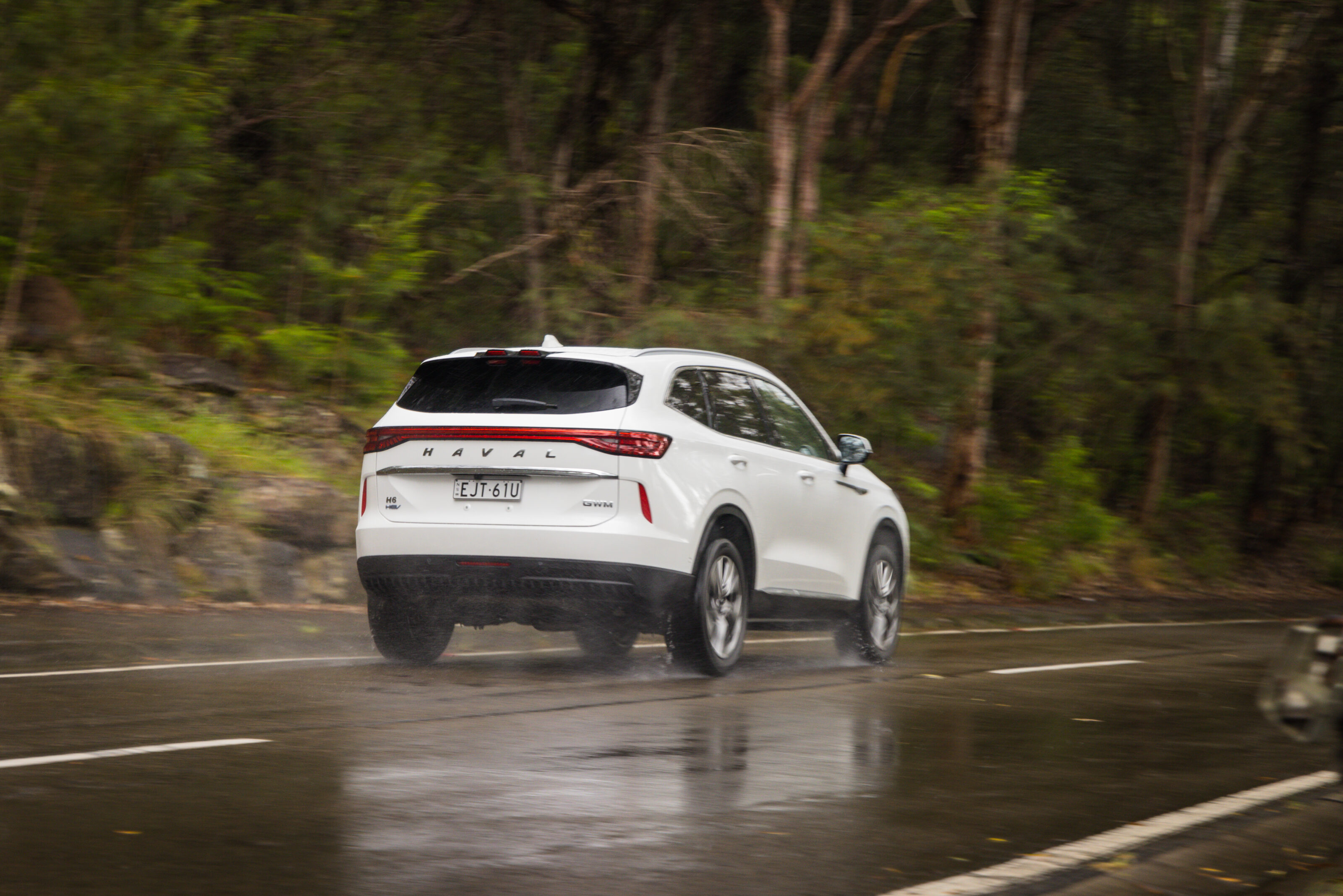
When not being driven like a car journalist, the H6 is very quiet, though, impressively so. The rain was really hammering down in Sydney and often with cheaper cars, the cheapness can come from skimping on sound deadening. It helps that the roof is a thick glass sunroof but there wasn’t a drum solo on the bonnet, either, at least not an audible one.
The quietness around town is largely to do with the powertrain. Most of us would compare it to the series hybrid setup of the RAV4 but it’s rather more complicated than that.
The basics are a 1.5-litre four cylinder with 110kW and 230Nm. Added to that is an electric motor with 130kW and 300Nm. Haval says that the combined power output is 179kW and…um…530Nm. Think the same amount of torque as a 911 with a turbo flat-six.
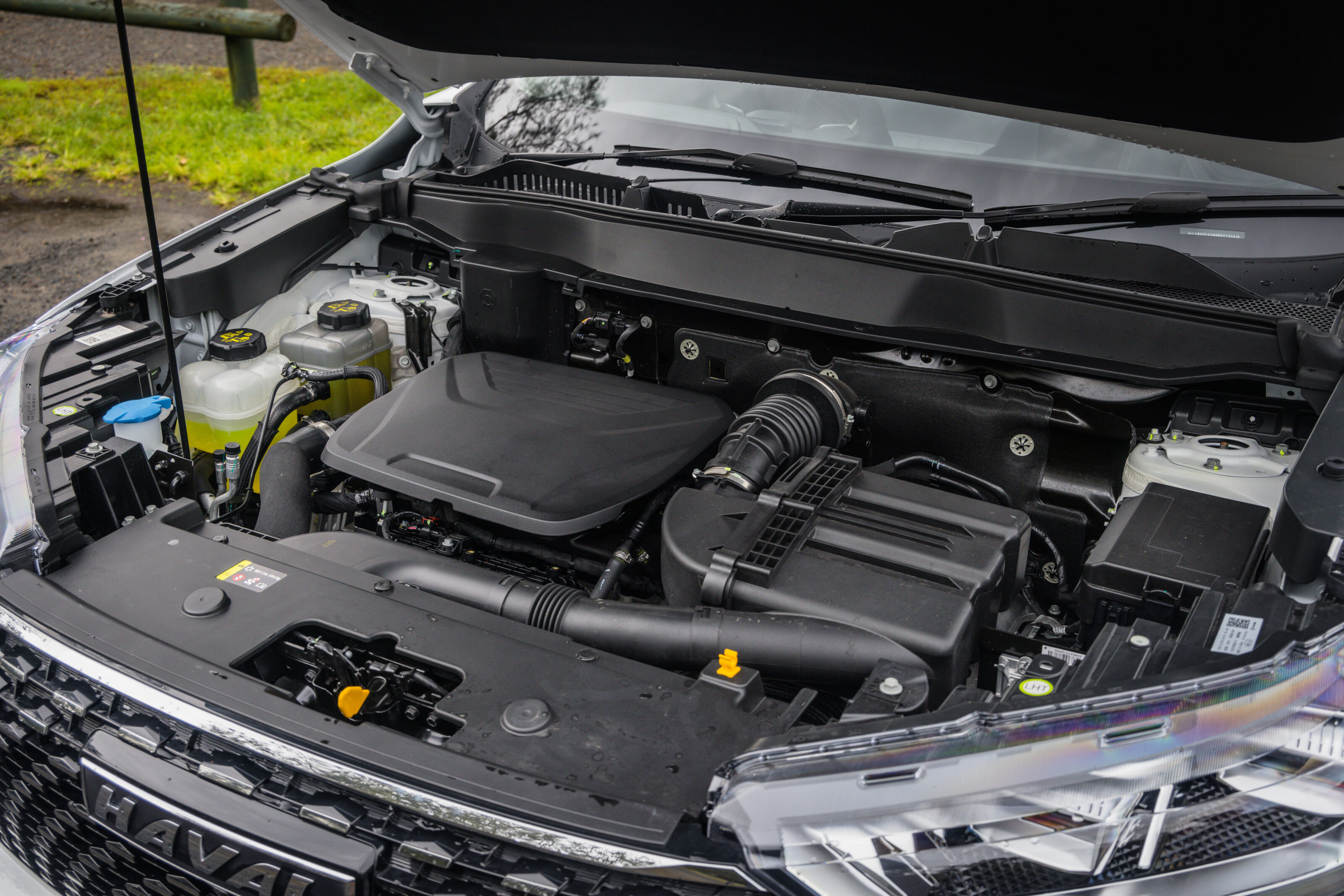
That’s a colossal amount of twist but I’m not sure you get it for very long. As I said before, the H6 will chirp with a heavyish right foot but there’s no sense that you’re packing that kind of heat with a full throttle in traffic.
Obviously, the Porsche has double the power, but hey, 530Nm isn’t anything to sneeze at (you probably shouldn’t be sneezing at things, let’s face it), especially if you’ve loaded up with people and their stuff.
Having said that, the H6 does respond smartly to a gap-grabbing throttle input and the steering, while a bit remote even in the heavier setting, does respond and once you’re used to the body roll, you can work this car through traffic. Overtaking on the freeway, where it is again very quiet despite being on 19-inch wheels and fairly wide rubber, is impressive, the electric motor chucking you a big slab of torque when you need it.
The drivetrain is a little difficult to explain because the information that came to me wasn’t really that helpful and there’s not much about the system in English. As far as I can tell the ICE and EV motors can work independently of each other, together in either series or parallel modes and the EV motor has a two-speed gearbox for improved efficiency.
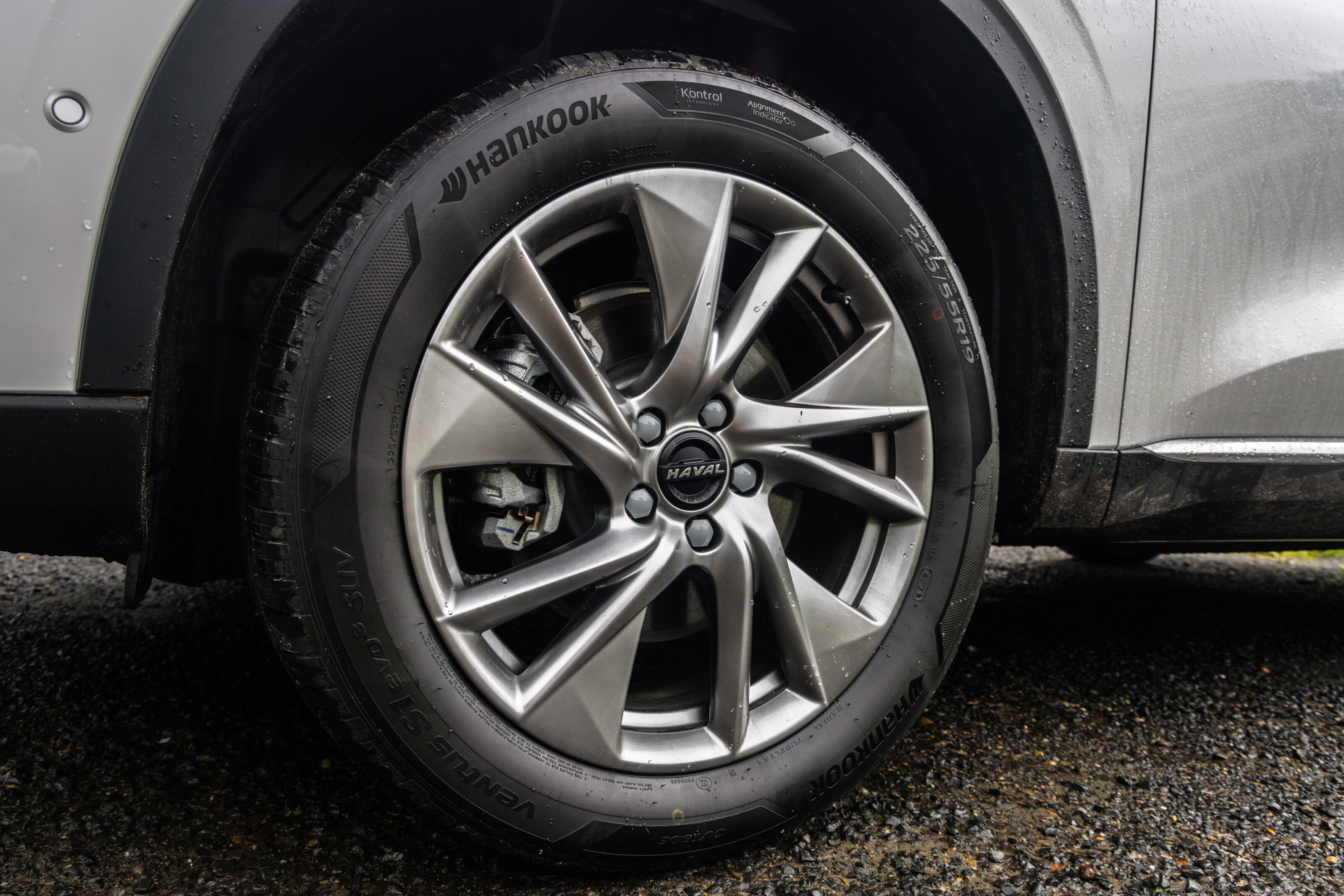
You can get up quite a speed in EV only mode, the 1.8kWh battery working quite well and seemingly offering more of that EV experience than most other hybrids on the market.
It might be hard to explain, but it works really and with a better set of tyres, the scrabbling and chirping would probably go away.
Haval claims a modest 5.2L/100km (about half a litre more than the RAV4) seems achievable given the longer I drove the car, the lower the figure moved, eventually settling at 6.0L/100km. When compared to the Toyota, the H6 has a lot more power and torque, so it’s not unexpected to see a higher fuel figure. Although the RAV does have an AWD option.
Ownership
Haval offers a seven-year/unlimited kilometre warranty along with five years roadside assist. The battery has an eight year/15 million kilometre warranty, so I look forward to folks pushing that particular envelope. Either way, that’s a good deal and is bettered only by Mitsubishi’s 10/150,000km (well, bettered if you do average miles, anyway).
The capped-price servicing regime calls for a first service at 12 months/10,000km for $225 and after that every 12 months/15,000km. Price ping around a bit with the next four costing $250, $400, $550 and $225 for a five service total of $1650 or an average of $330. More than a RAV4 but you’re getting a longer warranty and a more powerful drivetrain.
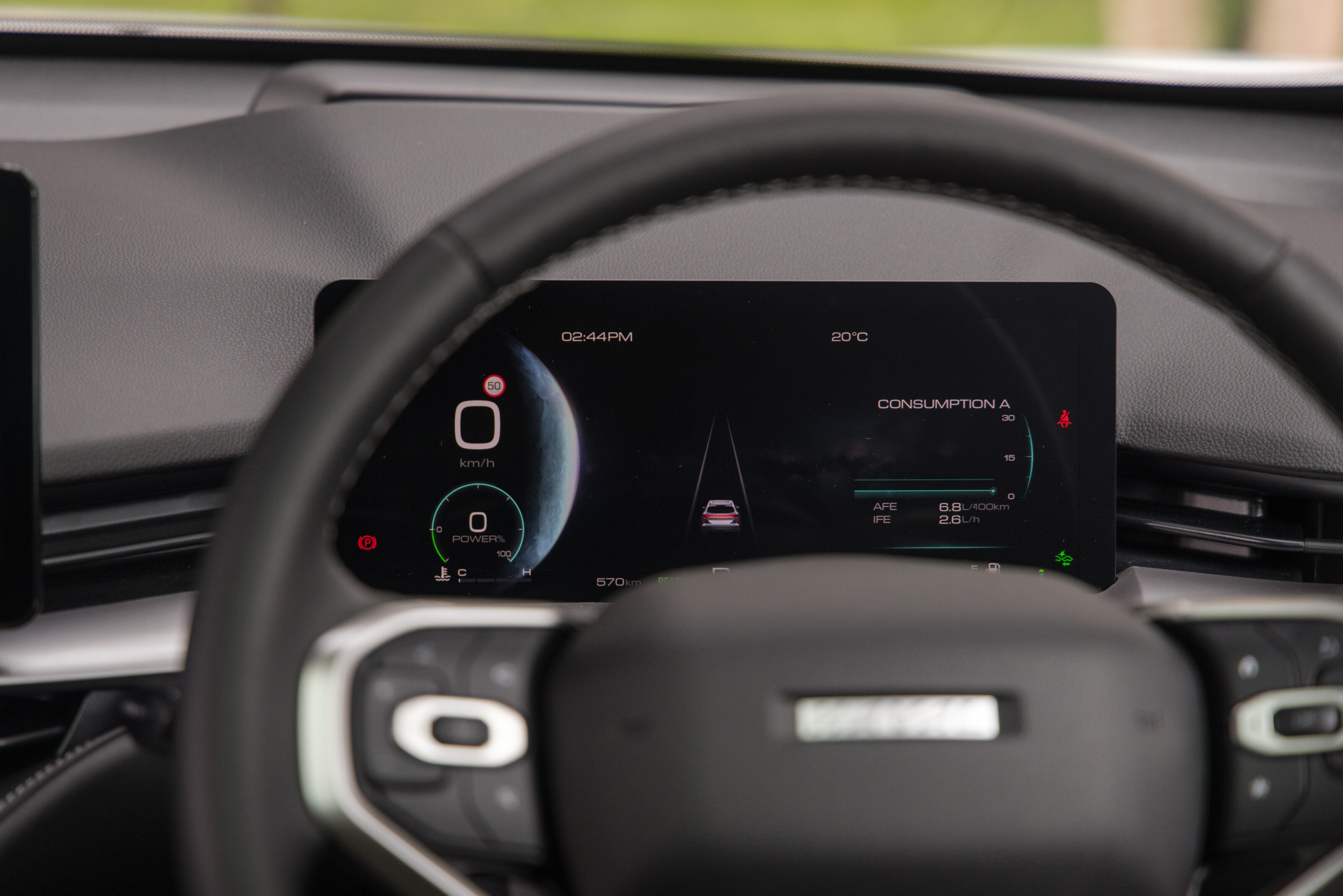
VERDICT
The H6 Hybrid is more convincing than the standard car, no question. The hybrid power unit is smooth and clever and will probably get better fuel efficiency than I extracted once it’s loosened up a bit more and isn’t being pushed about.
It’s a very mature and capable offering from Haval, with only some silly picky things like warning and information messages written in Google Translate-style English and some pernickety complaints about some of the functions.
The H6 doesn’t have the dynamic finesse of the RAV4 or much of this highly competitive segment, but that may not be an issue for many. The big savings over a fully-loaded RAV4 – or even a hybrid Subaru Forester for that matter – will get a few people in the door and quite few might drive out as a result of finding a car that is rather better than the price tag or unfamiliar brand name suggests.
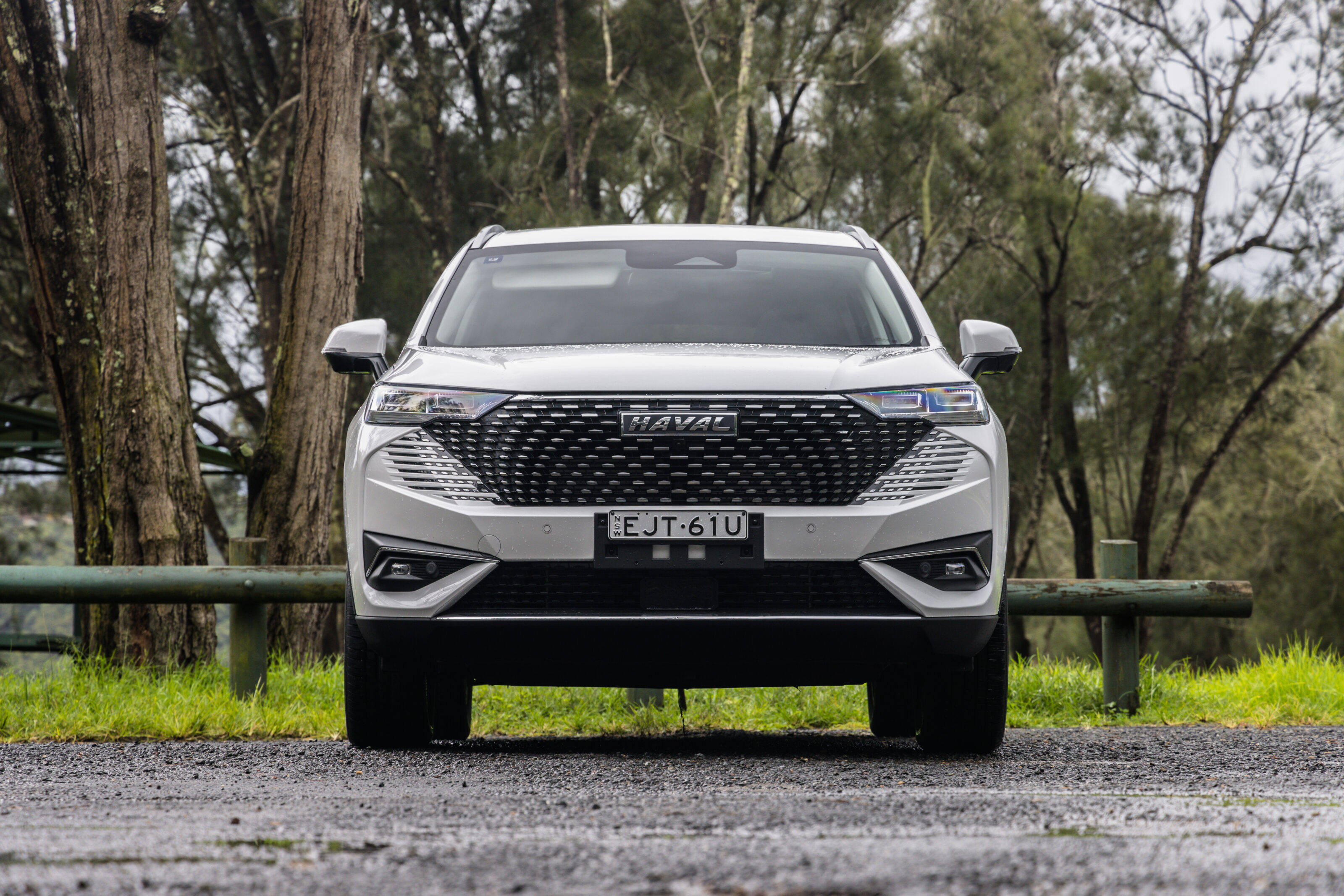
2022 Haval H6 Hybrid specifications
| Body:u00a0 | Five-door mid-size SUV |
|---|---|
| Drive: | FWD |
| Engine: | 1.5-litre four-cylinder |
| Transmission: | Seven-speed DCT |
| Power (ICE): | 110kW @ rpm |
| Torque (ICE):u00a0 | 230Nm @ rpm |
| Bore stroke (mm): | 75.0 x 84.9 |
| Compression ratio:u00a0 | 11.8 : 1.0u00a0 |
| Electric power: | 130kW |
| Electric torque: | 300Nm |
| Combined power: | 179kW |
| Combined torque: | 530Nm |
| Battery capacity | 1.8kWh |
| 0-100km/h:u00a0 | 7 sec (estimate) |
| Fuel consumption:u00a0 | 5.2L/100km (combined) |
| Weight: | 1690kg |
| Suspension: | MacPherson struts front / multi-link rear |
| L/W/H:u00a0 | 4653mm/1886mm/1724mmu00a0 |
| Wheelbase: | 2738mm |
| Brakes:u00a0 | ventilated disc front / solid disc rear |
| Tyres:u00a0 | XXX/XX XXX |
| Wheels:u00a0 | 19-inch alloy wheels (no spare, tyre repair kit) |
| Price:u00a0 | $44,990 DA |
Score breakdown
Things we like
- A bargain
- Clever drivetrain
- You can get one
- Roomy
Not so much
- No spare tyre
- Squidgy handling
- Choppy low speed ride
- Not available in AWD
We recommend
-
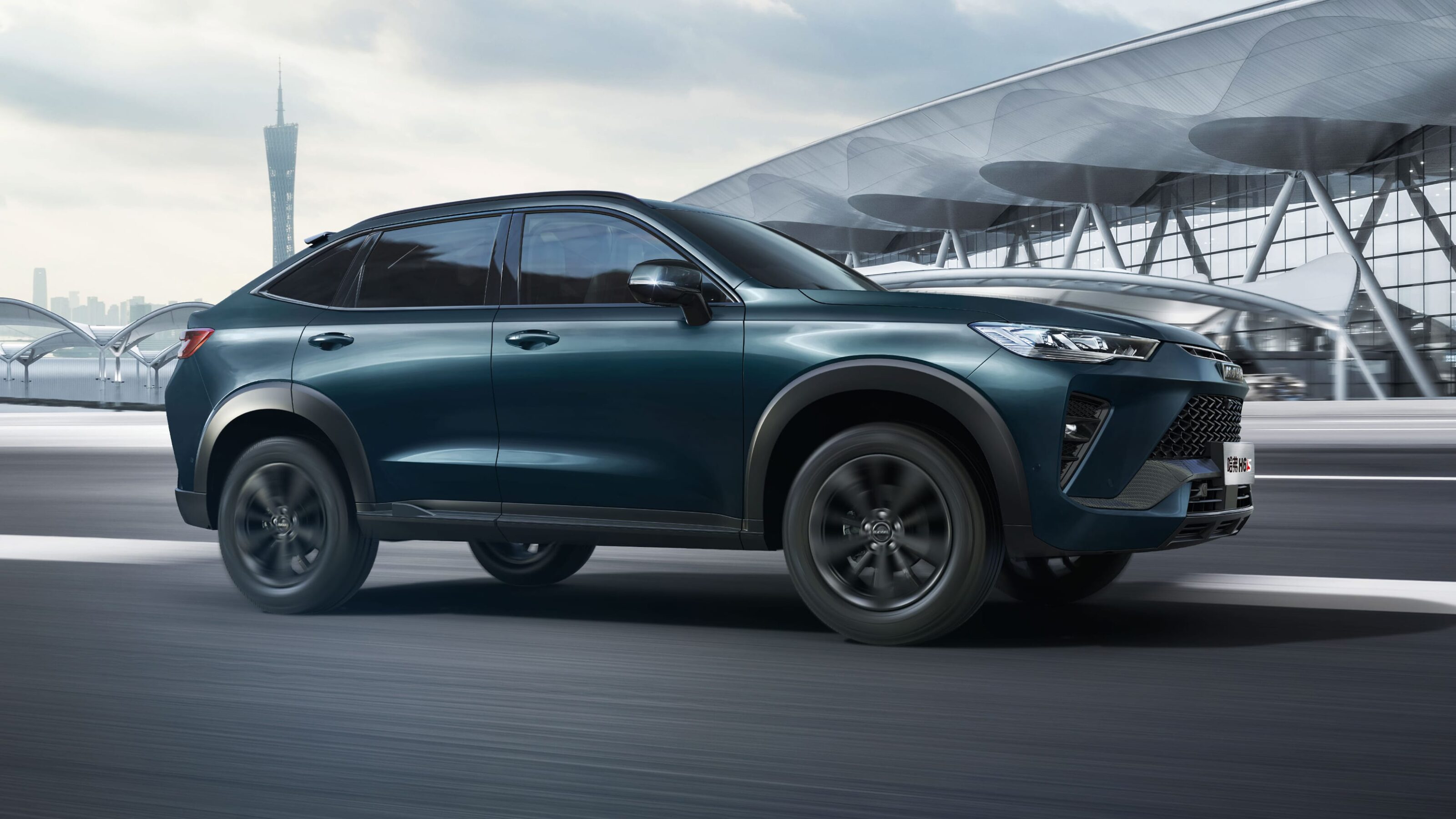 News
News2022 Haval H6 GT Australian launch delayed to July
The H6 GT will launch in Australia this July after being delayed by supply issues
-
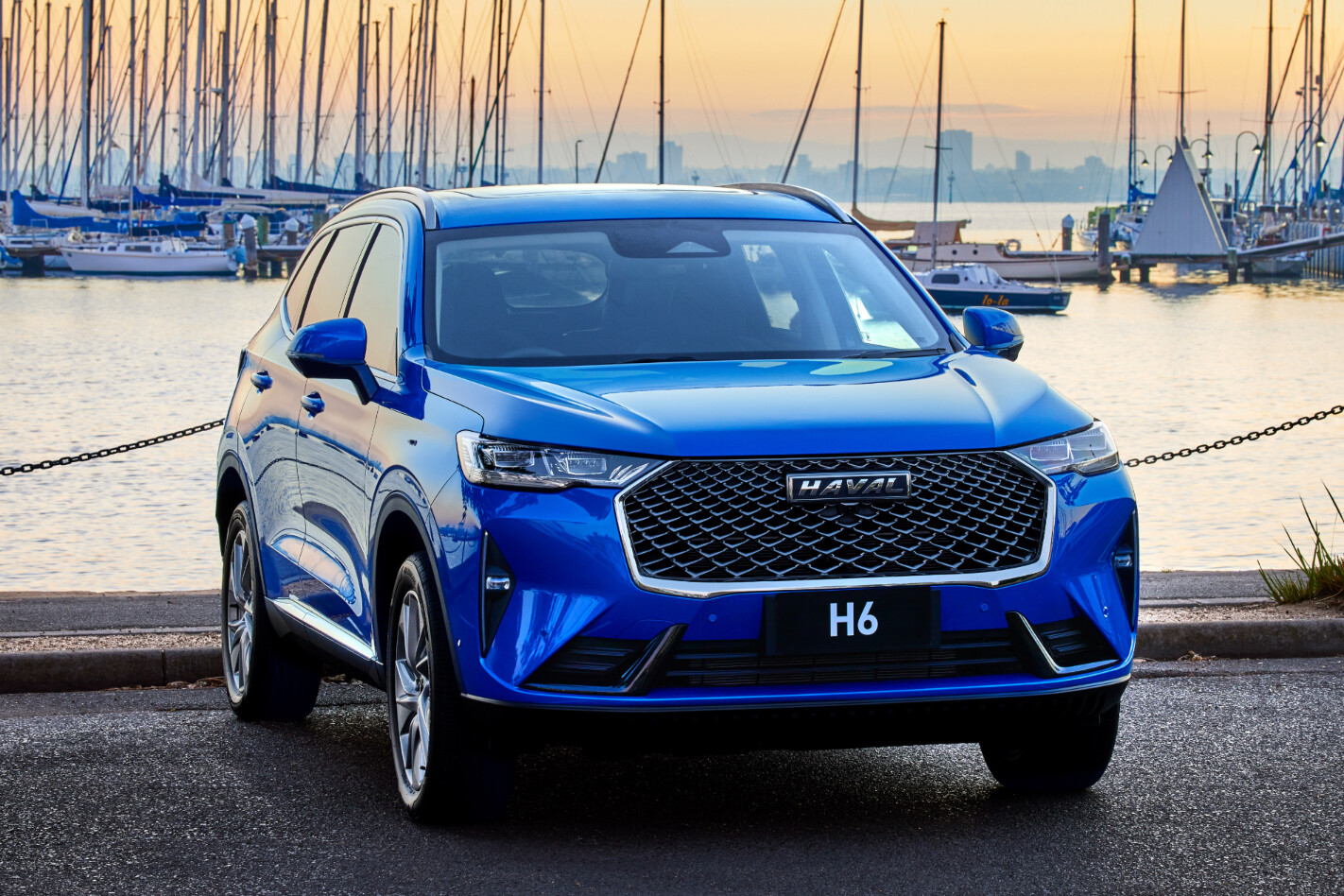 News
NewsUPDATE: 2021 Haval H6 now on sale, full price list confirmed
Chinese automaker comes out swinging with new SUV, hitting competitors with smart pricing and more tech
-
 News
News2025 New Car Calendar: All the new cars coming to Australia
Take a look at our list of what is expected to launch in Australia in 2025 – plus those we might not see locally just yet




